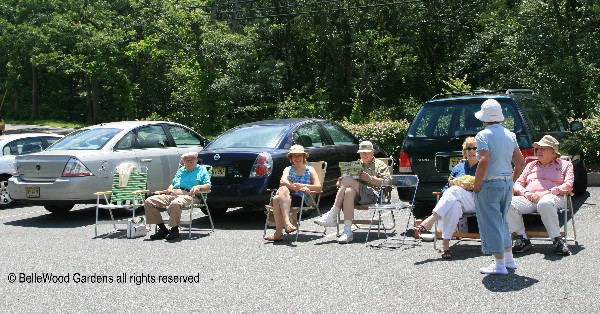
Saturday, 18 July 2009
Watnong Picnic
Every July there's a picnic. It's a much looked forward to meeting of the Watnong chapter of the North American Rock Garden Society. This year it's at Roger Bakerís secret garden. But first, visitors had to get there. The complication is this: lots of chapter members who want to come to a fabulous garden located on a narrow street with no room to park.

So we arrive at a nearby church, park in its lot, and - along with chairs,
plants for the sale, food in the form of appetizer, side dish, or dessert -
companionably make ourselves comfortable as we wait our turns for the shuttle.

It's a picnic. There's food. Friends to chat with, and a garden to peruse,
a garden that's been growing, changing, evolving, and maturing
for over forty years. Physically, it has several levels, just as
it does aesthetically. Roger has an artist's eye and a craftsman's touch.
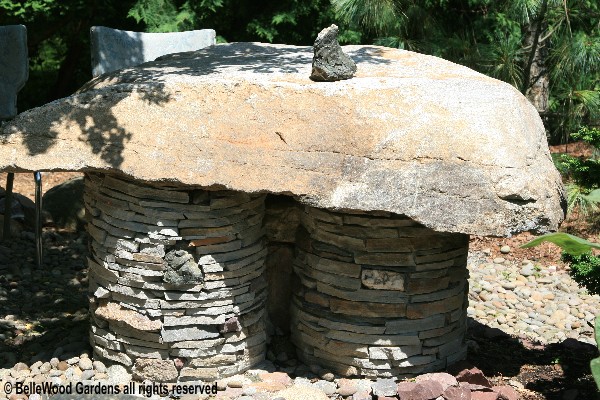
Roger's father built this table, split the stone that forms its top
and layered up the stones that make its castle-like supports.
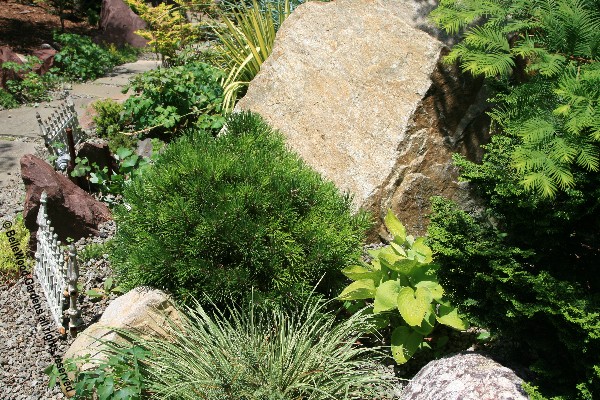
Roger is especially fond of conifers. He likes unusual forms, both evergreens
and deciduous trees and shrubs. And hostas, lots of hostas. He must like them, too.
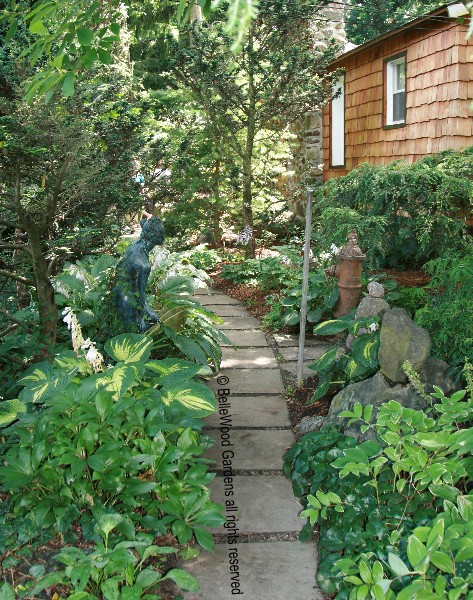
Twisting pathways of random blue stone meander through the garden.
It might be an acre. It could be more. It might be less. I have no idea
as I follow paths that change levels, twist back, turn, and lead me on.

We're told that 90% of the stone used to build the walls is native
and originated on the property, each stone hand-picked and
relocated by Roger and his father, creating paths, walls, seats.
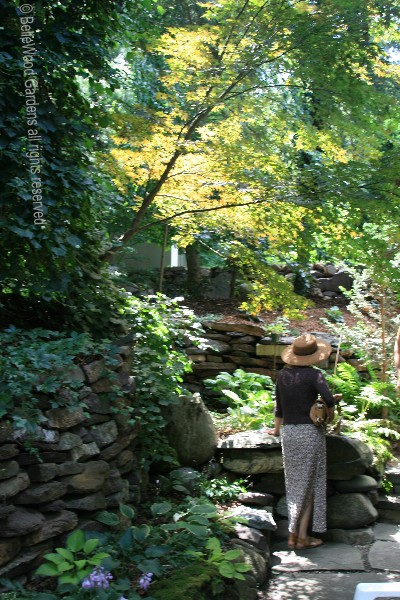
.
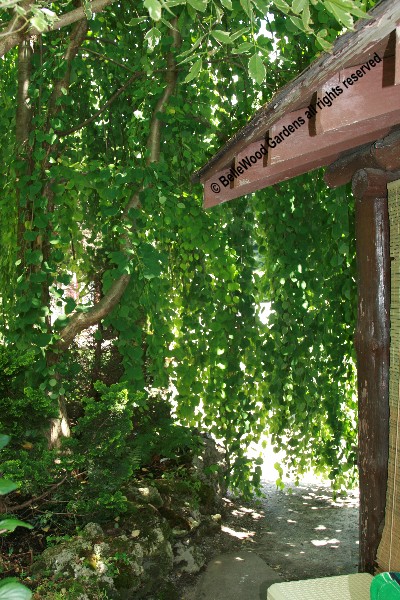
Rare conifers and deciduous trees create natural arbors,
a curtain formed by a weeping cercis leading the visitor
around a corner and onward to an array of specimen plants.
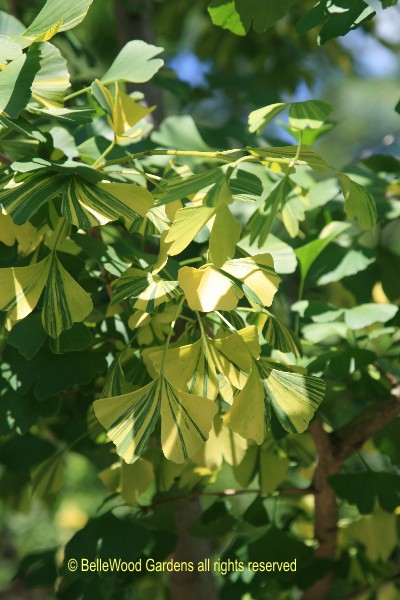
Exquisite. A variegated Ginkgo from Japan.
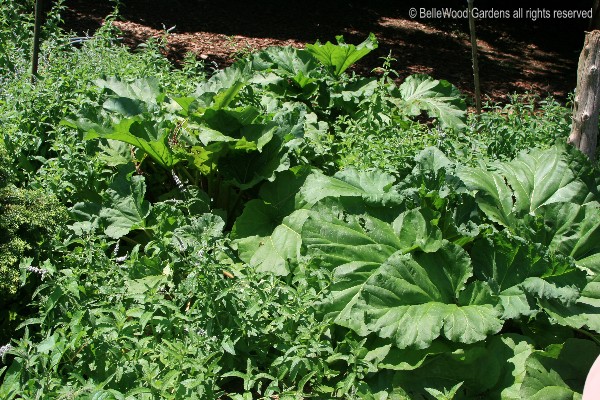
Foliage makes a fine foundation for a garden, playing textures off
against each other: bold and blocky to finely cut. Think outside
the box. The bold texture is here provided by rhubarb, just as well used
as an ornamental foliage plant as something edible in a vegetable garden.
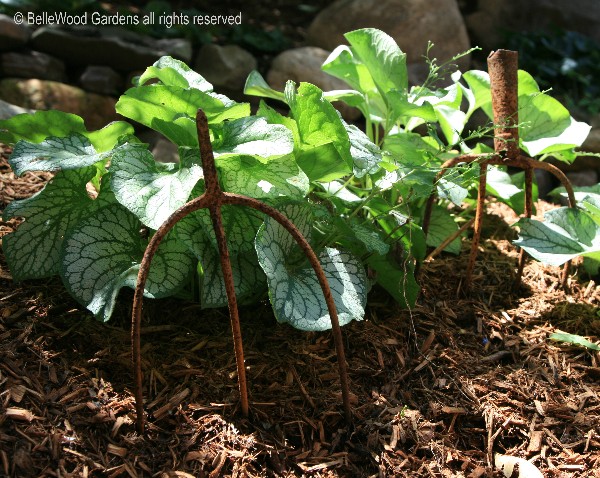
Brunnera 'Jack Frost' shimmers in the dappled sunlight, fenced with some rusty tools.

Porous, irregular, rough-surfaced tufa rocks laced with varieties of sempervivums

A pagoda-style lantern filled with a coil of rope lights, tiny LED bulbs
in a plastic tube. Noticeable in daylight, imagine how magical at night.
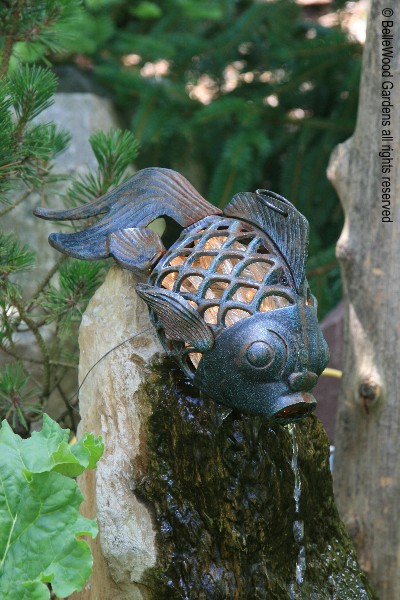
Even more enticing is this grillwork metal fish. I think they're sold
as candle holders. In Roger's garden, he's stuffed with lights and
functions as a fountain, spilling water into the pool below.

In Roger's studio, a wall-less space beneath a concrete deck,
there are several one-of-a-kind carvings. This one fascinates me.
But I'm especially charmed by this happy snake out in the garden.
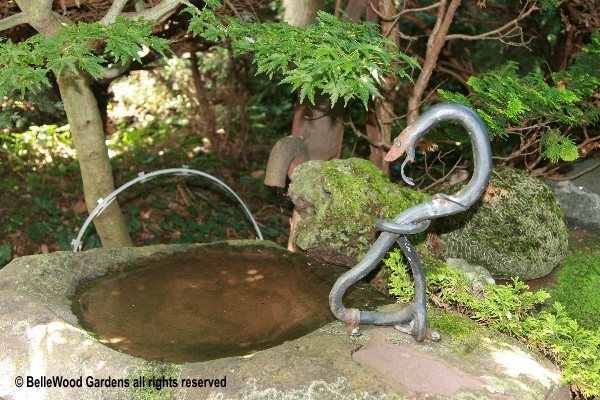
Happy visitors, we wait for the shuttle back to the church parking lot and our cars.
The food has been consumed, plants switched around (at least I don't think
anyone bought what they brought) and a ferment of ideas to consider. Remember,
to paraphrase the words of Tom Lehrer, it's not plagiarism. It's research.